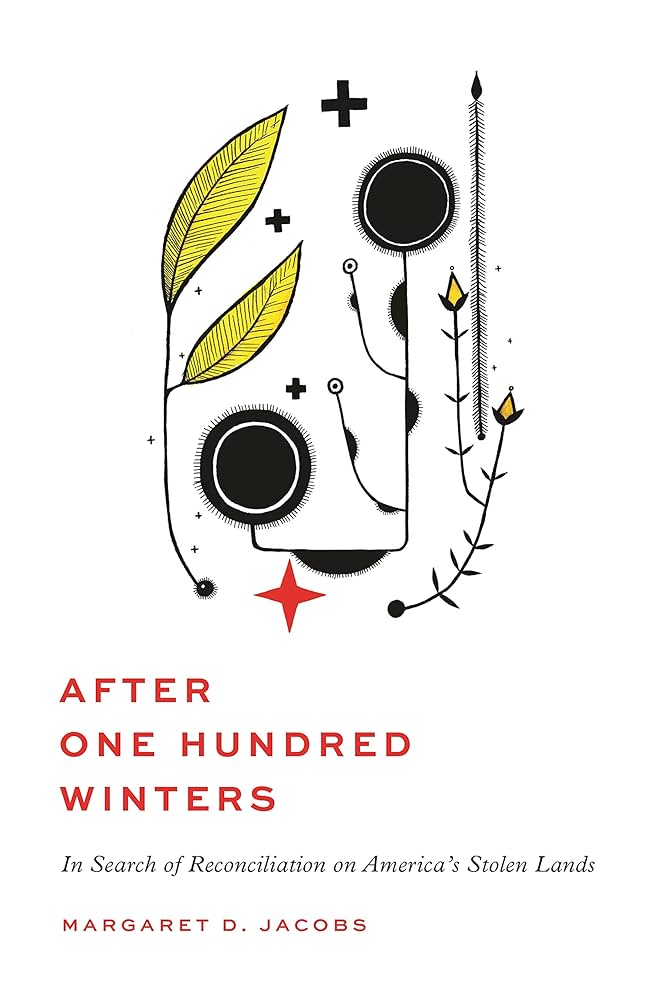Excerpted from After One Hundred Winters: In Search of Reconciliation on America’s Stolen Lands by Margaret D. Jacobs.
Nebraska’s settlers and professional archaeologists did not regard the Pawnees’ relatives in the same way as they did their own. Settler burial grounds were sacred sites for paying one’s respects to the dead; cemeteries for Indians were sites of curiosity, amusement, and profit. This was an attitude shared by most white settlers toward most American Indian people, for centuries. When the Stephen H. Long expedition, a government-sponsored exploration into the Rocky Mountains, passed through Nebraska in 1820, it obtained the skull of a Pawnee who had been killed in 1818. According to Edwin James, a botanist who chronicled the journey, “we thought it no sacrilege to compliment [the skull] with a place upon one of our packhorses.”
Such disrespect toward Pawnee burials betrayed a view that Indians were less than human. Indeed, many settlers may have felt justified in such careless treatment of Pawnee burials due to the dominance of dehumanizing rhetoric regarding American Indians in the nineteenth century.
Many nineteenth-century men of science were bent on creating racial theories of European superiority. To add insult to injury, many so-called scientists also used the skulls they had looted from Indian graves to “prove” that Indians were intellectually inferior to whites. Dr. Samuel George Morton, who helped establish the discipline of American physical anthropology, examined and measured the Pawnee skull from the 1820 Long expedition, along with those of 143 other Native Americans and hundreds of African American skulls. He asserted in his 1839 book Crania Americana that Caucasians had the biggest brains, averaging eighty-seven cubic inches, Indians were in the middle with an average of eighty-two cubic inches, and Negroes had the smallest brains with an average of seventy-eight cubic inches. Morton believed that brain size correlated with intelligence, and as Stephen Jay Gould has written in The Mismeasure of Man, he hypothesized that “a ranking of races could be established objectively by physical characteristics of the brain, particularly by its size.” (Gould and other critics have utterly debunked Morton’s work. Gould went so far as to study Morton’s calculations and concluded that he had engaged in “fudging and finagling” to support his preconceptions.)
